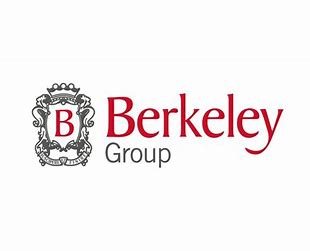 Berkeley Group is setting up its own build-to-rent (BTR) platform to build and manage 4,000 homes over the next decade, as it expects sales to remain “subdued” in the short-term.
Berkeley Group is setting up its own build-to-rent (BTR) platform to build and manage 4,000 homes over the next decade, as it expects sales to remain “subdued” in the short-term.
The housebuilder announced the plan to operate and manage a large portfolio of rental properties yesterday in its results for the year to 30 April.
Berkeley plans to develop and rent out 4,000 homes in London. The 10-year project aims to take advantage of the strong rental demand in the London area.
As of 30 April, Berkeley’s land holdings comprised 54,081 plots across 70 developments.
The group’s board announced a further 33p per share ordinary dividend to be paid to eligible shareholders in July, and a 174p per share dividend to be paid in September.
Anthony Codling, managing director of equity research at RBC Capital Markets, said: “Berkeley’s FY24 results were slightly ahead of expectations, once again demonstrating the robustness and resilience of the Group’s business model.
“Not content with firing on all cylinders, Berkeley announced that it is adding another cylinder to its finely tuned engine, a Build to Rent platform, it has also increased its FY2025 guidance by 5 per cent to £525million – bold actions in uncertain times.
“The Build to Rent platform is not a response pointing a weakness in the sales market, rather it points to the significant potential in the private rental market.
“Whether looking at homes for sale or homes for rent, we have a supply shortage and Berkeley is doing its bit to supply the homes we need. We expect the shares to react positively to the results today and the enhanced guidance for tomorrow.”


BTR is gathering momentum and is the new passive PRS investment asset for those who want to remain in the PRS but don’t want the hassle of owning properties.
The PRS is growing in size, but is changing its profile. Low end of the market will remain with traditional BTL landlords, and there’s nothing wrong with that if you are happy with your return on investment and the hassle you face from government, council, etc… BTR will address the higher end of the PRS, for renters who want better quality [typically inner city apartments] and will pay more for it. Investors will buy shares in the ‘landlord’ and receive dividends instead of owning the property and [hopefully] receiving rent.
The big question being asked by landlords who are selling up is, what to do next with their money. Would they look at investing in BTR if the dividend is, say, 5%?
You must be logged in to like or dislike this comments.
Click to login
Don't have an account? Click here to register
What an absolute nightmare…?
Big business makes even more money and the little guy is invited to participate by dividend payments from owning shares.
Since the late eighties the stock market has done appallingly badly!
On 27th September 1988 the FTSE100 was at a peak value of 2382.0 having been at a peak of 2386.6 on 12th July. It currently stands at 8272.46 having been at a peak of 8443.80 on 5th May. Peak to peak that’s an increase of about 254%.
In the same time the HPI for England has gone from 25.46 to 147.0. That’s an increase of 477%.
You might say that the stocks would have paid dividends, but the average yield has been 3.63% which if reinvested back into stocks would have performed significantly worse.
In 1988 £100,000 invested in the FTSE100 would now be worth something in the region of £607,000 assuming no management fees and no taxes paid.
The same amount invested in property would be have the property valued at £477,000 and the landlord would have had the benefit of rent all through that time.
In my area, a property worth the best part of £500,000 would rent for perhaps £2,500 per month or £30,000 per annum. In 1988 (using the RPI rent figures), that would have been £490 per month or £5,280 per annum. That’s a growth rate in rent of about 6%. The long term bank account savings rate is approximately 4.5% (eclipsing the dividend on shares BTW). This means that if the landlord had done nothing but put the money into a savings account the total rent plus interest would be worth just under £650,000.
This makes the total property investment worth approximately £1.13 million pounds.
This means that the property market has very roughly, outperformed the stock exchange by 86% over the last 26 years.
That’s not quite but nearly double the performance of the stock market.
Pretty impressive.
Now, the questions you might like to ask are “Why?” and “Who benefitted?” and “What policies were enacted by government to allow this massive disparity?”
You must be logged in to like or dislike this comments.
Click to login
Don't have an account? Click here to register
For context, the Dow Jones has increased from 3,201 to 38,994 in approximately the same time period (data from Jan 1992 was the earliest I could find).
That’s an increase of 1,218% which is nearly five times the performance of the London Exchange!!!
You must be logged in to like or dislike this comments.
Click to login
Don't have an account? Click here to register